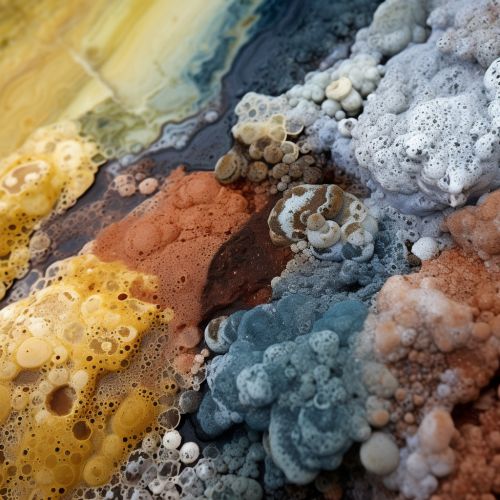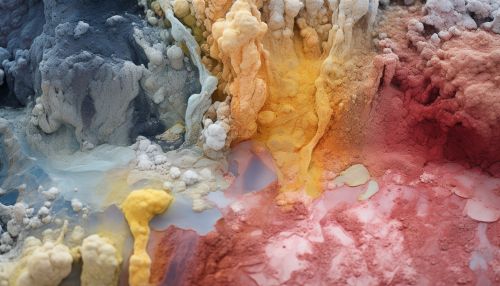Mechanisms of Sulfur Cycling in Marine Sediments
Introduction
Sulfur cycling in marine sediments is a complex biogeochemical process involving the transformation of sulfur compounds through various oxidation and reduction reactions. This process plays a crucial role in the global sulfur cycle and has significant implications for the marine ecosystem and global climate. The cycling of sulfur in marine sediments is primarily driven by microbial activity, particularly by sulfate-reducing bacteria and sulfur-oxidizing bacteria.


Sulfur in the Marine Environment
Sulfur is a ubiquitous element in the marine environment, present in various forms including dissolved sulfate, elemental sulfur, and organic sulfur compounds. The concentration of sulfur in seawater is approximately 28 mM, predominantly in the form of sulfate ions (SO4^2-). Sulfate is the second most abundant anion in seawater after chloride, making it a significant electron acceptor for microbial respiration in anoxic marine sediments.
Microbial Sulfur Cycling
Microbial activity is the primary driver of sulfur cycling in marine sediments. Two main groups of microorganisms involved in this process are sulfate-reducing bacteria (SRB) and sulfur-oxidizing bacteria (SOB).
Sulfate-Reducing Bacteria
Sulfate-reducing bacteria (SRB) are a diverse group of anaerobic microorganisms that utilize sulfate as a terminal electron acceptor in their energy metabolism. The reduction of sulfate to sulfide (a process known as dissimilatory sulfate reduction) is a key step in the sulfur cycle. This process is represented by the following general reaction:
SO4^2- + 2CH2O → H2S + 2HCO3^-
SRB are ubiquitous in marine sediments, especially in anoxic zones where oxygen is depleted. The produced sulfide can react with metal ions to form insoluble metal sulfides, contributing to the black color often observed in anoxic sediments.
Sulfur-Oxidizing Bacteria
Sulfur-oxidizing bacteria (SOB) are another important group of microorganisms involved in sulfur cycling. These bacteria can oxidize reduced sulfur compounds (such as sulfide, elemental sulfur, and thiosulfate) to sulfate, thereby regenerating sulfate for use by SRB. Some SOB can also use reduced sulfur compounds as electron donors for chemosynthetic carbon fixation, contributing to primary production in sulfur-rich environments.
Biogeochemical Implications
The cycling of sulfur in marine sediments has several important biogeochemical implications. First, the reduction of sulfate to sulfide by SRB contributes to the removal of sulfate from seawater, influencing the global sulfur cycle. Second, the oxidation of reduced sulfur compounds by SOB regenerates sulfate, maintaining its availability in marine environments. Third, the production of sulfide can lead to the formation of metal sulfides, which can sequester toxic metals and influence the geochemical cycling of these elements.
Environmental and Climatic Implications
Sulfur cycling in marine sediments also has significant environmental and climatic implications. The production of sulfide can lead to the formation of hydrogen sulfide gas (H2S), which is toxic and can cause mass mortality events in marine organisms if released into the water column. Moreover, the cycling of sulfur is closely linked to the cycling of carbon and can influence the sequestration and release of carbon in marine sediments, with potential implications for global climate change.
Conclusion
Understanding the mechanisms of sulfur cycling in marine sediments is crucial for predicting the response of marine ecosystems to environmental changes and for managing the health and productivity of our oceans. Future research should aim to elucidate the complex interactions between microbial activity, geochemical processes, and environmental factors that govern sulfur cycling in marine environments.
